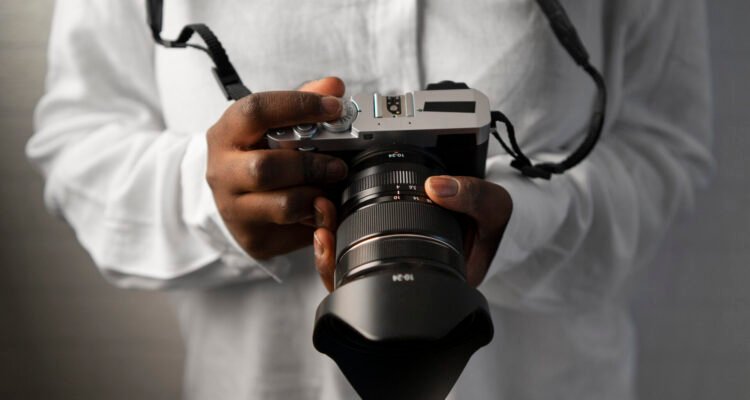Explore the unexpected factors that impact photographer salary. Understand how industry trends, specialized skills, geographical…
Photography Terms for Newbies
There are various photography terms one should familiarize themselves with if the intend to enter the industry. These are some of the common terms;
Aperture
This is an opening or a hole within the camera lens which allows light to travel from the object being captured to the image sensor or photo film. It is flexible and can be adjusted to control the amount of light entering the camera thereby regulating the image’s exposure.
Aspect Ratio
This is basically the ratio of the image’s height to width. The most common ratio in most cameras’ is 3:2 which can vary e.g. 6:4, 12:8 and so on. One can adjust the image’s aspect ratio when taking photos or crop it afterwards to the required ratio. It is most important when printing images
Bokeh
It refers to the out of focus/ blurred areas in the background of the photograph. It appears as small smooth, blurred circles. It makes the photograph beautiful and forces one to focus on the subject of the photo.
Burst Mode
Normally we want to take one snap of an item. However, there are times when we want to capture several snapshots especially when motion is involved. This is where burst mode comes into play, it allows us to continuously take photos as long as the shutter button is pressed. The burst speed varies depending on the camera being used.
Chromatic Aberration
This term is used when a lens fails to focus colors to one point. This results to distorted and out of focus images.
Depth of Field
This is a term used to explain how much of the photograph is in focus. It is the distance between the nearest and the furthest images in a photograph.
Diffuser
This is any object that scatters or deflects light in order to transmit soft light. It helps in creating a well-focused and balanced image. Its most useful when shooting on a sunny day. See here
Exposure
This is defined as the amount of light which reaches a film or an image sensor. It determines the brightness of the image i.e. the more the exposure the brighter the image and vice versa. One can change the exposure depending on how bright the want their image to be.
Focal Length
This is the distance between the lens and the image capture on the film. It is usually given in millimeters. It generates an angle of view which is the range of the scene captured by the image sensor. If the angle of view is wide, the image area captured is greater compared to small angle of view where it is smaller.
Focus
This refers on how sharp an object appears through the lens. When an object is sharp and clear, it is termed as in focus while a blurred image is said to be out of focus. Normally, cameras are tuned to auto focus but one can switch to manually in order to focus manually on the object.
HDR In Full
High Dynamic Range, is a technique used to balance the ratio of light to dark better than what the normal ratio. It uses three photos taken at different exposures which are then overlaid over each other picking the best parts of each photo to make a ‘hybrid’ photo with better dynamic range.
ISO
It refers to the sensitivity of an image sensor to light. Depending on the ISO number, one can easily know how much a camera is sensitive to light i.e. the lower the number the lower the sensitivity and vice versa. The more sensitive the sensor, the faster it is.
JPEG
This is the most used image storage format for digital cameras. This digital format can easily be shared via social media, emails, web paged and storage devices. It can also be converted to other image forms e.g png.
Long Exposure
This refers to when the film has been exposed to light for a long time. Its is mostly used when shooting objects where there is limited light.
Manual Mode
This is a setting that allows a photographer to manually set exposure. It allows one to set the aperture, ISO, and shutter speed. One can also manually focus on objects.
Megapixel
This is the unit used to measure the size of the sensor in digital cameras. Mega -pixel is a collection of 1,000,000 pixels. The higher the megapixels the clearer the images.
Noise
This are the little grains that appear in an image. Depending on the number, an image can have low or high noise. Images with high noise are often not sharp.
Orientation
This refers to hoe the image is taken. There are two basic planes of orientation i.e. Landscape and Portrait. In landscape, an image is longer than it is tall. Portrait image is when the ratio of length to width is greater. One can interchange them depending on their preference for capturing a specific object.
Shutter
This is the part of a camera that opens then closes to allow light from outside reach the film or image sensor. This allows one capture the image. The longer it stays open the more light it allows to pass through. It is also worth noting that anything that moves when the shutter is open appears blurred.
Shutter Release
This is the button one presses to commence photo shooting. It basically opens the shutter to allow immediate capture of an image.
Viewfinder
This is the hole one normally looks through when taking a picture. It helps one focus on the object they want to photograph.
White Balance
Our eyes automatically detect white objects and view them as such. However, cameras need to be tuned in order to take white items. Luckily, most digital cameras come with white balance feature which automatically adjusts settings hence we are able to take snapshots of white items.



